Intel 335 Series 240GB SSD Review
Inside The 335 Series
Four screws are all that hold the drive together and, at least on the drives we received, there are no warranty sticker to muck up ingress to the fragile bits located within.
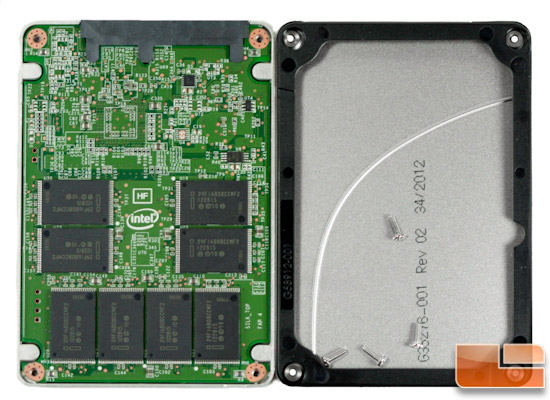
Opening the drive reveals a full-sized PCB and a plastic spacer that spans the drive perimeter. Inside is also a thermal pad that rests between the controller and the exterior for heat dissipation and physical shock absorption.
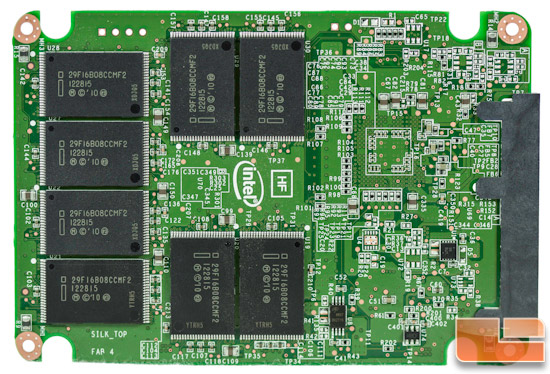
The first side of the PCB simply carries eight of the sixteen total NAND Flash modules that are found in this 240GB drive.
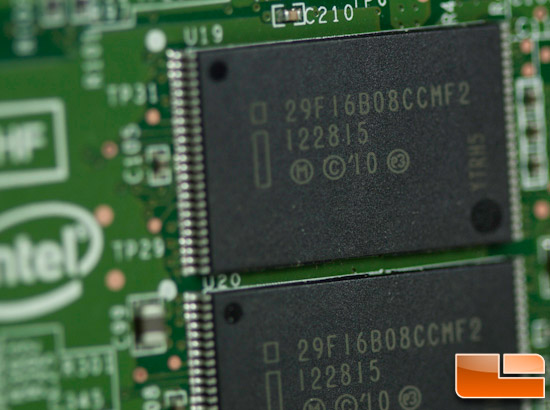
As we discussed in the opening, the MLC NAND is 20nm in architecture and Intel in manufacture in partnership with IM Flash Technologies (IMFT). According to Intel, it’s the first in the industry to leverage a Hi-K/metal gate planar cell technology. This overcomes ” the inherent difficulties that accompany advanced process technology” which translates to equal performance and reliability found in the larger 25nm NAND because as most know, the smaller the architecture the greater the error rate which needs compensation.
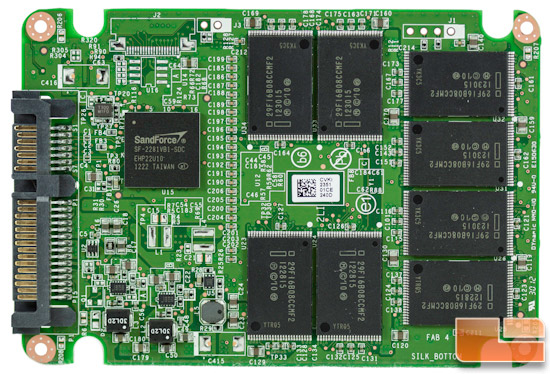
On the opposite side we have the same NAND layout with the controller off to the side. In terms of physical NAND capacity on board, we are looking at 256GB (1GB = 1,000,000,000 bytes).
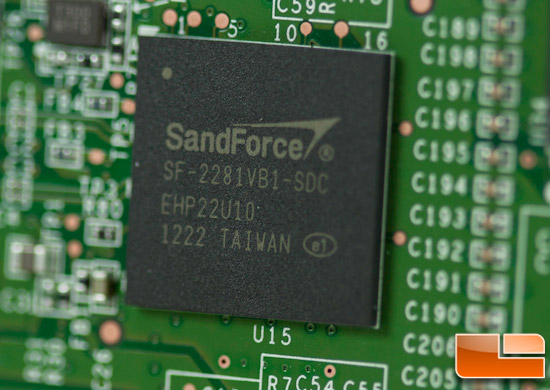
While the SandForce SF-2281 controller is getting a little long in the tooth in terms of SSD controllers as it’s been around for 2 years already! Even so, it’s staying power is testament to the quality component it is although that depends heavily on the firmware employed. We know there have been issues with BSODs, TRIM reliability, etc but we also know that Intel did a ton of work to make sure they were putting out drives with the best firmware possible in terms of reliability. Outside of proprietary customizations, the SF-2281 controller uses it DuraClass technology to handle error correction, encryption, wear leveling and real-time data compression. It’s this compression that allows it to keep write amplification low and boost writes speeds on compressible data. It’s safe to say, it’s the most widely used consumer SSD controller on the market.

Comments are closed.